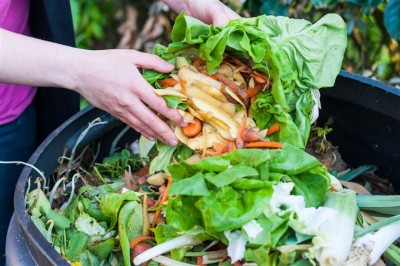 (BPT) – Americans are more environmentally aware than ever, and the demand for sustainability has even made its way to our tables. If you’re among those seeking dining options that feature locally sourced and sustainably harvested ingredients, you’re part of a powerful movement. But are you as aware of where leftover food ends up when it leaves your table? Or where unpurchased, unused foods go?
(BPT) – Americans are more environmentally aware than ever, and the demand for sustainability has even made its way to our tables. If you’re among those seeking dining options that feature locally sourced and sustainably harvested ingredients, you’re part of a powerful movement. But are you as aware of where leftover food ends up when it leaves your table? Or where unpurchased, unused foods go?
Recent media stories on the topic of food waste abound, and the U.S. Department of Agriculture estimates that roughly 30 to 40 percent of food grown in the United States each year is sent to landfills. This is happening while millions of Americans struggle with hunger and are in need of healthful, nutritious food.
To meet this challenge, some local governments are starting to prohibit commercial businesses from sending their food waste to landfills in an effort to reduce methane emissions that result from decomposing organic material. The topic has piqued the interest of numerous industries and organizations, which makes sense since reducing food waste can make a big impact. By cutting food waste, a business can reduce its environmental footprint, lower operating costs, help its community and engage customers. It’s a win for everyone and allows businesses to make an enormous difference.
The National Restaurant Association helps restaurateurs tackle the issue of food waste. Together with the Grocery Manufacturers Association and the Food Marketing Institute, the Food Waste Reduction Alliance (FWRA) is working to reduce, reuse and recycle food waste. Since its inception in 2011, the coalition has worked to raise awareness of the issue, share best practices and produce tools the food industry can use to reduce waste in its daily operations.
In addition, the National Restaurant Association’s Conserve program is aimed at inspiring operators to take action by reducing waste at its source. Restaurateurs are encouraged to divert waste from landfills into other, more productive uses, such as donating surplus food to people in need and producing compost that can be put back into the soil and used to help grow the food supply.
Nevertheless, barriers to eliminating food waste still exist. Infrastructure is needed so restaurateurs can fully embrace food waste management. And employees need training as well. The first step, already underway, is to create more awareness about the issue and emphasize some solutions.
For restaurateurs who are interested in getting started now, begin by conducting a waste assessment and measure how much waste is generated at your establishment. Restaurants can track their waste traditionally, recording it with pen and paper; or by using the U.S. Environmental Protection Agency’s online tools. Companies, like LeanPath, also offer mobile tracking and reporting software installed on a tablet, making the process manageable.
Participating in a food donation program is another way to reduce food waste and do some good, too. Many restaurants don’t know there is a tax write-off for donating food. Furthermore, the Good Samaritan Act protects restaurateurs against liability claims that are associated with donating food.
Solving the issue of food waste will take time and help from everyone: restaurateurs, policymakers, food donation organizations, composters and waste haulers. But if everyone works together, the benefits to the population and the environment could be astounding.

